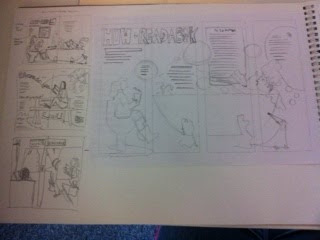Researching what is available and topics
I started my research by seeing what is available for Key stage 2-3 age groups. I looked at the BBC history pages for children, I looked at what the Natural History museum and the V&A had to offer to teachers, working on subjects for this age group.
I also looked at the other types of worksheets available to print off on the internet. This gave me an idea of what was good/bad design features in a worksheet.
I concluded it needed to be fairly bright, interesting to look at, the document selected was an important consideration. This is because it needs to give encouragement to make links, decipher meaning, knowledge and the material of the document and what it all means together.
I made notes, sketches and did layouts of the important elements for the pages, including the three questions, facts and possible activities I could include.
I then went onto the NA website to investigate subjects that I thought would be appealing.
I researched documents about various historical events. I looked at the Great fire of London, The Domesday book, and the medieval period.
I decided that I wanted the three pages to be linked by a subject. So three documents could give a larger picture of that point in time.
I chose the interesting story Mata Hari from the time of WW1.
I researched her files on the National archives spending quite some time deciphering what was happening in the interviews with New Scotland Yard, looking at letters and photos.
After examining the documents that the NA had on her and her story. I looked at what documents would be the most appropriate for each page and what questions i could ask the children to work out about them. So they could investigate the case for themselves and put the pieces of the document jigsaw together to reach their conclusions and discuss their findings.

Mata Hari in a nutshell:
While Margaretha Geertruida Zelle MacLeod (1876"“1917) may not have caused World War I, she sure as heck kept it going. Having spent time in Java with her husband, Captain Campbell MacLeod, Margaretha returned to Holland and sued for divorce. To make ends meet she took up exotic dancing and the name Mata Hari (meaning "the light of day" in Malay). With her sensual performances becoming the attraction of the major European cities came the men and the gifts for her favors. Many of these favors came from royalty and high-ranking French and German military officers. As World War I progressed, both sides became suspicious that Mata was spying for the other side. The French eventually put her on trial and, although the charges were never proven, Mata Hari was convicted of espionage and was executed by a firing squad on October 15, 1917. Playing the seductress up until the end, Mata refused a blindfold, smiled, and blew a kiss to the firing squad as the fatal shots were fired.

Comments
Post a Comment